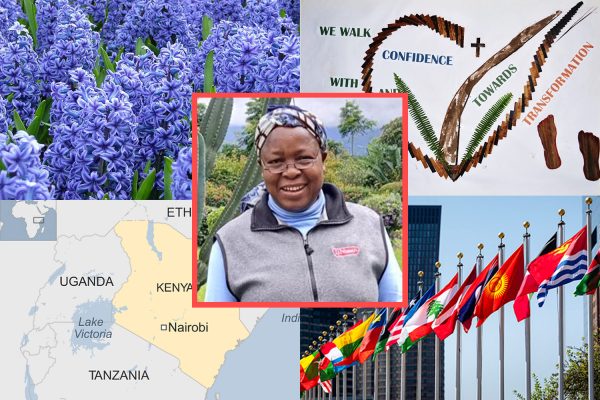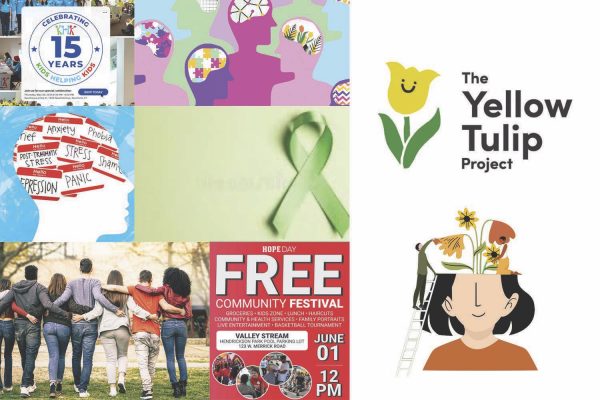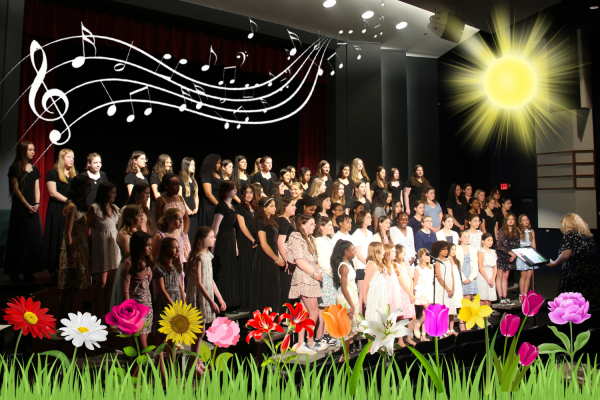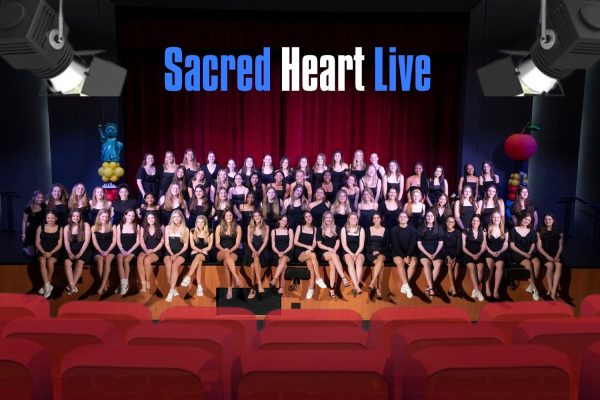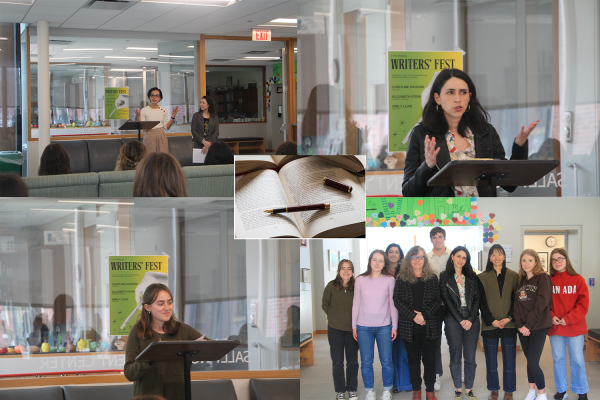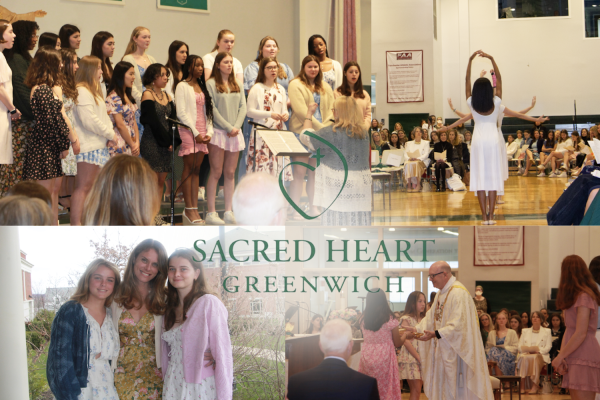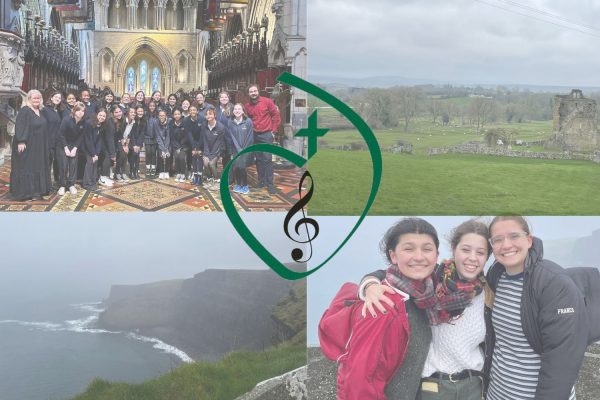Juniors extend global knowledge through service and immersion in Perú
Over spring break, 19 Sacred Heart Greenwich juniors took part in a cultural immersion service trip to Perú. While visiting towns and cities such as Misminay, Chinchero, and Machu Picchu, the students got a taste of the native culture and way of life through volunteering at local schools, learning about the country’s agriculture, admiring the vast topography surrounding them, and interacting with the locals.
During their first night in Cusco, the students celebrated the start of Lent with traditional festivities in the town which included spraying soap and water at others and tossing water balloons. To begin their first full day the group drove to Andahuylillas, a small town where they visited a chapel. Junior Cassidy Willie-Lawes shared insight on their visit in a daily reflection sent to the Upper School community.

“During our visit, we were educated on the mixture of Incan beliefs and Catholicism that are represented throughout the chapel,” Cassidy said. “One example is how Mary is depicted with clothing in the shape of a mountain and she wears the crown of the sun. This is because the Incas believed in Madre Tierra or Mother Earth, and in order to get them to believe in Catholic principles, a compromise was to be made in the way they were depicted.”
Joining Cassidy on the trip were classmates Jackie Prata, Carly Haines, Cameron Calcano, Julia Welsh, Zoe Bucci, Katia Barker, Renata Trevino, Sophia Curto, Elexa Wilson, Stephanie Guza, Sophia Georgas, Nicole Mellert, Rachel Ali, Jenna Washington, Edilia Bueno, Victoria Hannett, Gracie McDevitt, and Gabby DiBiase. The trip was open to every junior taking Spanish, all of whom have a basic proficiency of the Spanish language, which enabled them to communicate with the locals in Perú.
Accompanying the students were Mrs. Souad Malih, Upper School Arabic and French Teacher, Señora Montserrat García, Upper School Spanish Teacher and Upper School World Languages Department Chair, and Señora Sandra Piña de Stewart, Upper School Spanish Teacher.
The rest of day two was filled with site visits. They ventured to the ancient town of Pikallaqta, the Cusco Cathedral, and the Qoricancha Temple. The night concluded with a walk around Plaza de Almas in Cusco.
On their third day, the Sacred Heart students explored Tambomachay, where they learned about Inca irrigation, and Sacsayhuamán, a site that contains the ruins of a fortified complex. They also stopped in at the San Pedro market, where they bought collectibles and saw a glimpse of everyday life in Cusco.
After a few enriching days in Cusco, the group embarked on its drive to the Sacred Valley of the Incas, first stopping in Chinchero where they visited a weaving center. Then, in Misminay, local men and women playing Peruvian instruments welcomed the Sacred Heart students and gifted them with handmade bracelets. Together, the group and the locals participated in a ceremony calling on Pachamama, or “Mother Earth,” and other spirits to protect them.
As part of the trip’s initiative to give back to Peruvian communities, students visited Esceula Acconto, a school in the town of Maras. Here, they met students and engaged in conversation and activities with them, including volleyball and soccer. In Victoria’s daily reflection, she recalled discovering several facts about the children that distinguished their daily routines from those of the Sacred Heart visitors.
“In [Escuela Acconto], we were introduced to the students and had the chance to play volleyball and soccer,” Victoria said. “Then, we visited their classrooms and talked about our regular days in school. We learned that some of them to walk as much as one hour to get to school, and when they arrive back home in the afternoon they help their parents with house chores: the girls help in the kitchen while the boys will work on the fields.”
The next day, Sacred Heart students experienced the culture of Willoq, a school in the Sacred Valley. The girls played, sang, and danced with children from the ages of three to five. Nicole and Julia worked in a classroom with a group of 16 five-year-olds. Although the students’ native tongue was Quechua, an indigenous language, Nicole and Julia were able to ask the children questions about their clothing, traditions, and daily lives by communicating with the classroom teacher in Spanish.

“Although there was a language barrier between us and the children, a gesture as simple as a high five reminded us that we were still connected in unconventional ways,” Nicole and Julia said. “Despite the drastically different cultures and lifestyles, we were urged to consider the many different forms of communication that open many doors and allow us to forge new relationships no matter the location.”
In the evening, the group departed for their next destination: Ollantaytambo. Here, they hiked almost 220 steps of the ancient Inca fortress, observing an aerial view the picturesque mountains and scenery from the top.
On the group’s last day they traveled to Machu Picchu, a historic sanctuary created by the Inca empire that rests 2,430 meters above sea level, according to whc.unesco.org. Elexa appreciated the natural beauty of Machu Picchu and was grateful to visit a world-renowned site with profound history.
“After studying Advanced Placement World History last year and learning about the Incan society, it was very cool to go see their technological achievements in person,” Elexa said. “For example, in history, we talked a lot about terrace farming and it was very cool to see an example of that in person. The Incan technological achievements and the mountain ranges will take your breath away. Visiting Machu Picchu is an experience I will never forget.”
Señora García believes that the trip to Perú was an opportunity for Sacred Heart students to experience a culture different from their own and contribute to the bettering of a foreign community.
“During our trip, students had the opportunity to live and experience first hand the Spanish Language,” Señora García said. “It was a chance for all of them to get out of their comfort zone, and to explore not only another culture but also a very different way of living, especially during our visit to two local schools. As one of my students said: ‘It was a true ‘eye-opening’ experience.'”
Featured Image Courtesy of Julia Welsh ’20
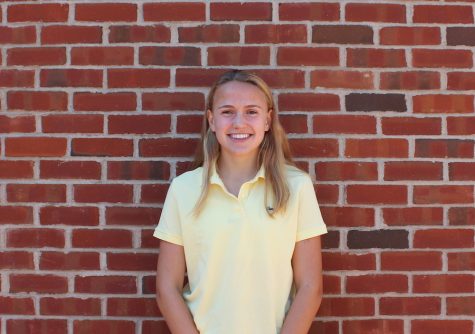
Sydney is thrilled to return to the King Street Chronicle for the 2019-2020 school year as Co-Editor-in-Chief. Moving forward from her previous position...

